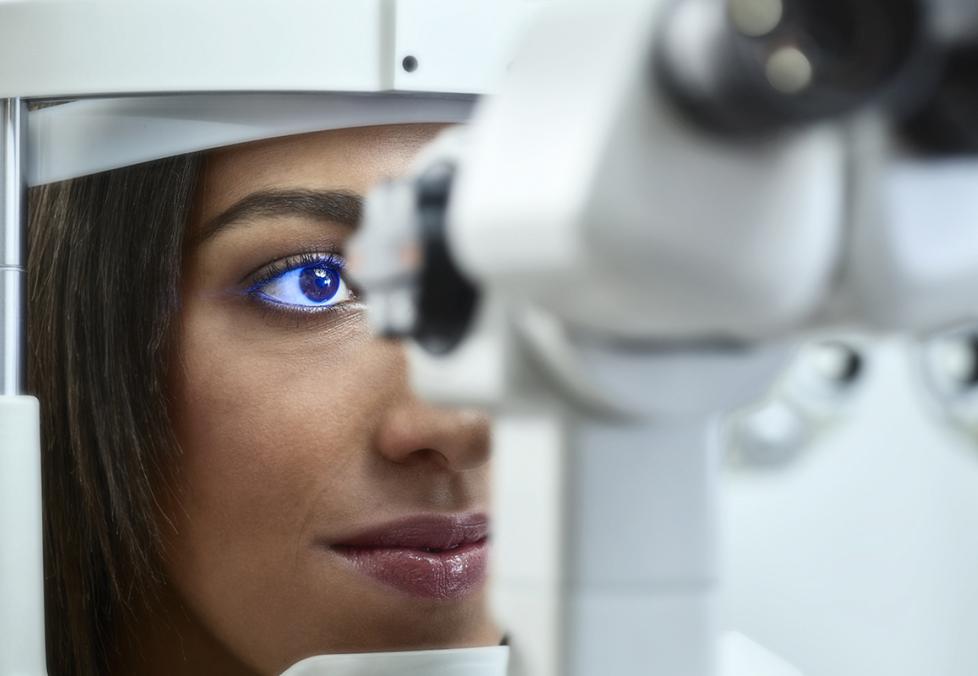
GreenLove frames made from recycled materials. Plastic-neutral contact lenses. We're committed to keeping our environmental impact low.
Everything you need to know to take care of your eyes — for life.
Think you know everything about contact lenses? Put that knowledge to the test.

Contact lenses might seem straightforward: You get a prescription, order what you need, and then wear them daily.
But what if you have dry eye or want to go swimming? And does it really matter whether you wear the exact brand the doctor prescribes?
We asked Ishan Gandhi, O.D, an optometrist at Best Vision PLLC, located inside America’s Best Contacts & Eyeglasses in Suffolk, Virginia, to share some thoughts on questions like these and more. Test your own Eye-Q on these true or false questions and see if your answers match up with Dr. Gandhi’s insights.
Did you know that contact lens prescriptions need to be renewed every year? Find an exam time that fits your schedule.
In most cases, that’s true, says Dr. Gandhi. But he adds that it depends on the health of the surface layers of your eye — including your cornea, tear glands, and the membrane that covers the eye (conjunctiva).
“Some patients who experience dry eye may not be able to wear contact lenses for more than eight to 12 hours — even if they’re disposables,” he says.
Generally, that is false. When swimming with contact lenses, you increase your chances of infection, so it’s not usually recommended.
However, Dr. Gandhi adds, you may be able to wear contacts in the pool if you take the following extra precautions to reduce your risk of infection:
For more on keeping your eyes safe during water play, read 5 Ways to Protect Your Eyes While Swimming.
True, says Dr. Gandhi. Dryness with contact lens wear is very common and using lubricating drops can help.
“Thinner lubricating drops are available over the counter for patients who need to use them while wearing contact lenses. The drops should be labeled ‘for use with contact lenses,’” he says.
Your eye doctor can recommend a brand that’s right for you.

GreenLove frames made from recycled materials. Plastic-neutral contact lenses. We're committed to keeping our environmental impact low.
Absolutely true, according to Dr. Gandhi.
“Eye doctors consider a number of factors when prescribing contact lenses,” he says. Those include:
“We look at all of these things when recommending contact lenses that will fit well, be comfortable, and help you see clearly,” he says. “Changing brands can cause dryness, provide poor vision, and in some cases deprive eyes of oxygen, causing irreversible damage.”
Press play on this video to learn more about your contact lens prescription:
Gold star if you answered true, says Dr. Gandhi.
“There are lenses that not only help patients see clearly but also stabilize or slow the progression of refractive errors,” he says. “These lenses are typically prescribed at a younger age, as that is the phase of life when the prescription is changing the most.”
Examples of these lenses include:
Learn more about the contact lens options for kids by reading 5 Lesser-Known Facts About Contact Lenses for Kids.
Generally, this is false, according to Dr. Gandhi. For most people, vision begins to change in your 40s, when the lenses of the eyes get less flexible, which reduces the ability to focus on up-close objects. The classic tipoff is when reading menus and other small print becomes more difficult.
“This is called presbyopia, a condition that can be corrected with bifocal or multifocal lenses, he says. “Contact lens wearers often have the misconception that they can no longer wear contact lenses or that they may need to wear glasses with their contacts lenses to see clearly at far and near distances.”
But options such as monovision or multifocal contact lenses can help with both close and far vision, he adds. If that’s your situation, you should discuss monovision and multifocal contact lenses with your optometrist to see if you’re a good candidate for either of them.
Learn more by reading Wearing Contact Lenses and Reading Glasses? You Have Better Options.